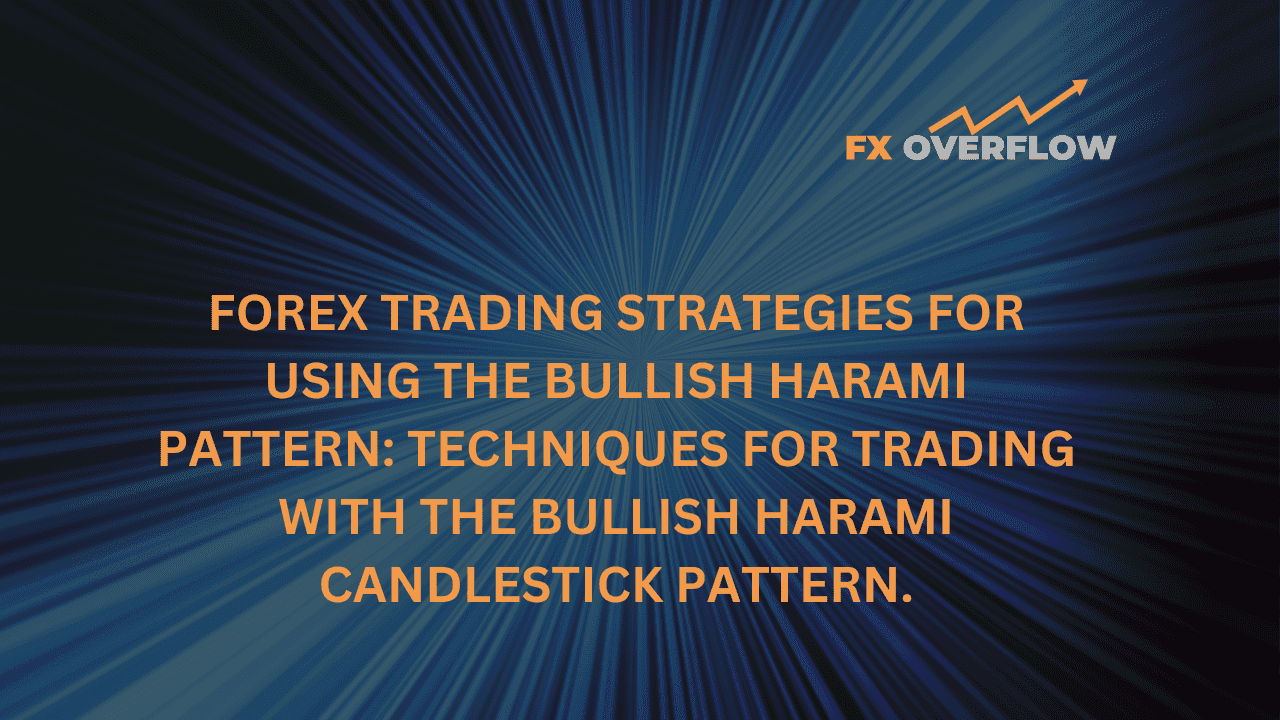Forex trading strategies for using the Bullish Harami pattern: Techniques for trading with the Bullish Harami candlestick pattern.
In the world of forex trading, successful traders understand that recognizing and interpreting candlestick patterns is an essential skill. These patterns provide valuable insights into market sentiment and can guide traders in making informed decisions. One such powerful pattern is the Bullish Harami, a two-candle formation that signals potential trend reversals. In this article, we will delve into the techniques for effectively trading with the Bullish Harami candlestick pattern.
Table Content
I. Understanding the Bullish Harami Pattern
II. Techniques for Trading with the Bullish Harami Pattern
1. Confirming the Pattern
2. Waiting for the Close
3. Setting Stop-Loss and Take-Profit Levels
4. Combining with Other Patterns
5. Considering Timeframes
6. Practicing on Demo Accounts
7. Adapting to Market Conditions
III. Footnote
Understanding the Bullish Harami Pattern
The Bullish Harami is a reversal pattern that occurs during downtrends. It consists of two candles: a larger bearish (downward) candle followed by a smaller bullish (upward) candle. The key characteristic of this pattern is that the bullish candle's body is entirely engulfed within the body of the preceding bearish candle. This visual representation signifies a potential shift in market sentiment from bearishness to bullishness.

The psychology behind the Bullish Harami is intriguing. The initial bearish candle reflects the dominance of sellers, pushing the price lower. However, the smaller bullish candle that follows indicates that buying pressure is increasing, causing the price to recover from its lows. This tug-of-war between bears and bulls can often lead to a trend reversal or, at the very least, a temporary price bounce.
Techniques for Trading with the Bullish Harami Pattern
Trading any candlestick pattern requires careful consideration and additional confirmations. Here are some strategies to effectively utilize the Bullish Harami pattern in your forex trading:
1. Confirming the Pattern
While the Bullish Harami pattern itself is indicative of a potential reversal, it's essential to confirm its validity using other technical indicators or tools. Common confirmation techniques include analyzing the Relative Strength Index (RSI), Moving Averages, and trendlines. When the Bullish Harami pattern appears at a key support level or coincides with oversold conditions on the RSI, its reliability as a reversal signal increases.
2. Waiting for the Close
To minimize false signals, it's advisable to wait for the second bullish candle to close before taking action. This ensures that the pattern holds true and isn't simply a temporary fluctuation. Patience is key; rushing into a trade based on a pattern that hasn't yet confirmed itself could lead to losses.
3. Setting Stop-Loss and Take-Profit Levels
Implementing proper risk management is vital in forex trading. When trading the Bullish Harami pattern, consider placing a stop-loss order below the low of the bullish candle or the recent swing low. This safeguards your position in case the anticipated reversal doesn't materialize. As for take-profit levels, consider aiming for previous resistance levels or using a trailing stop to capture potential gains as the price moves in your favor.
4. Combining with Other Patterns
The most successful traders rarely rely on a single pattern to make their trading decisions. Combining the Bullish Harami with other reversal patterns, such as bullish divergence or morning star formations, can enhance the probability of a successful trade. Confluence of multiple signals increases confidence in the trade setup.
5. Considering Timeframes
Different traders operate on different timeframes, from short-term scalpers to long-term trend followers. The Bullish Harami pattern holds significance across various timeframes. However, it's important to consider the timeframe you're trading on, as shorter timeframes might yield more frequent but potentially less reliable signals due to increased market noise.
6. Practicing on Demo Accounts
Before implementing any trading strategy involving the Bullish Harami pattern with real funds, it's recommended to practice on demo accounts. This allows you to familiarize yourself with the pattern's behavior under different market conditions and build your confidence in identifying and trading it effectively.
7. Adapting to Market Conditions
Market conditions are dynamic and can change rapidly. While the Bullish Harami pattern is powerful, there will be instances where it doesn't lead to a significant reversal. It's important to remain adaptable and not force trades that don't align with the overall market context.
Footnote
In the realm of forex trading, the Bullish Harami pattern stands as a testament to the power of visual analysis. Its ability to signal potential trend reversals makes it a valuable tool in a trader's arsenal. However, like any trading strategy, it's not foolproof. Proper risk management, confirmation techniques, and an understanding of market context are crucial to successful trading with the Bullish Harami pattern. As with any skill, practice and continuous learning will refine your ability to effectively use this pattern in real-world trading scenarios.











Discussion